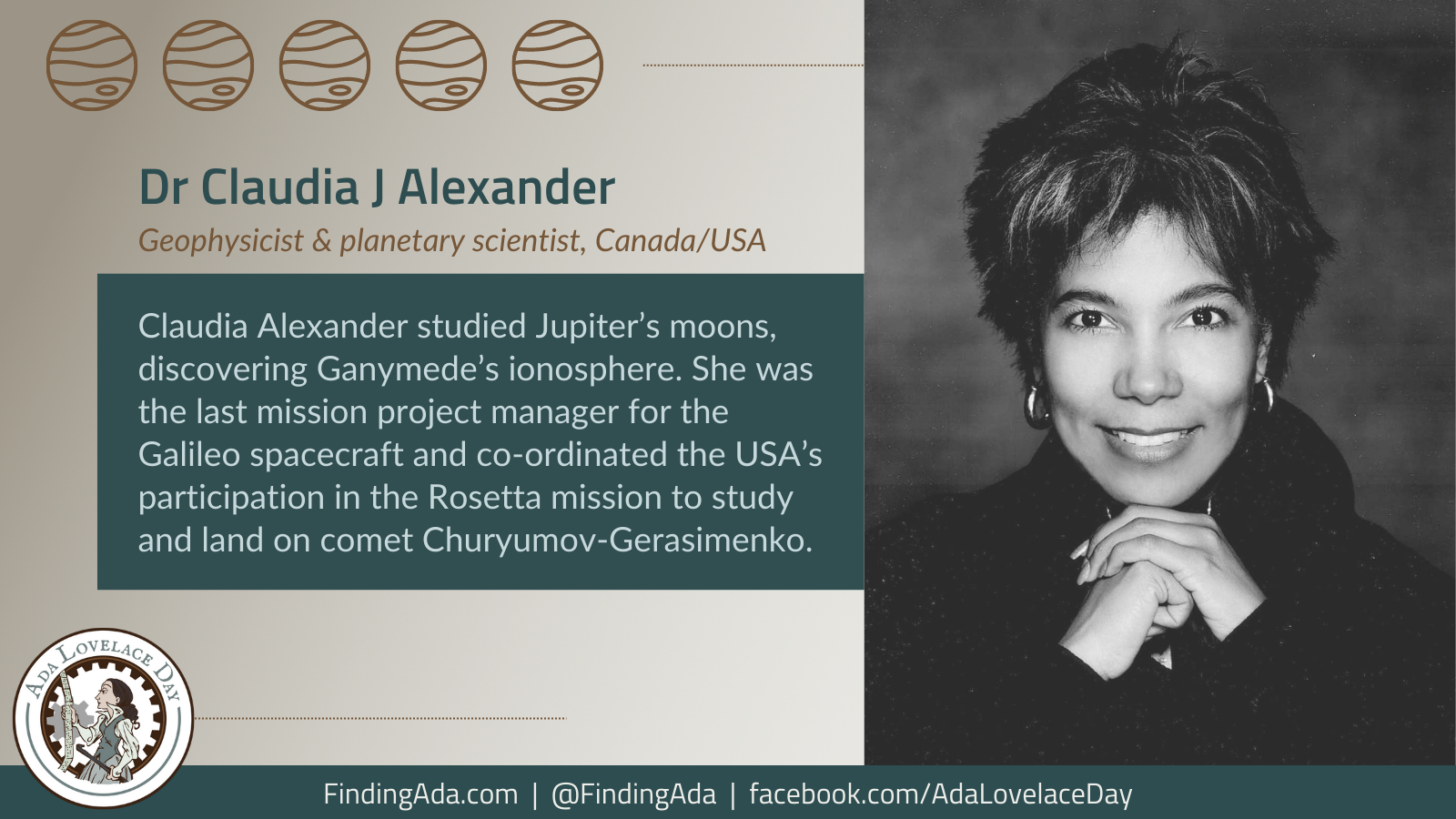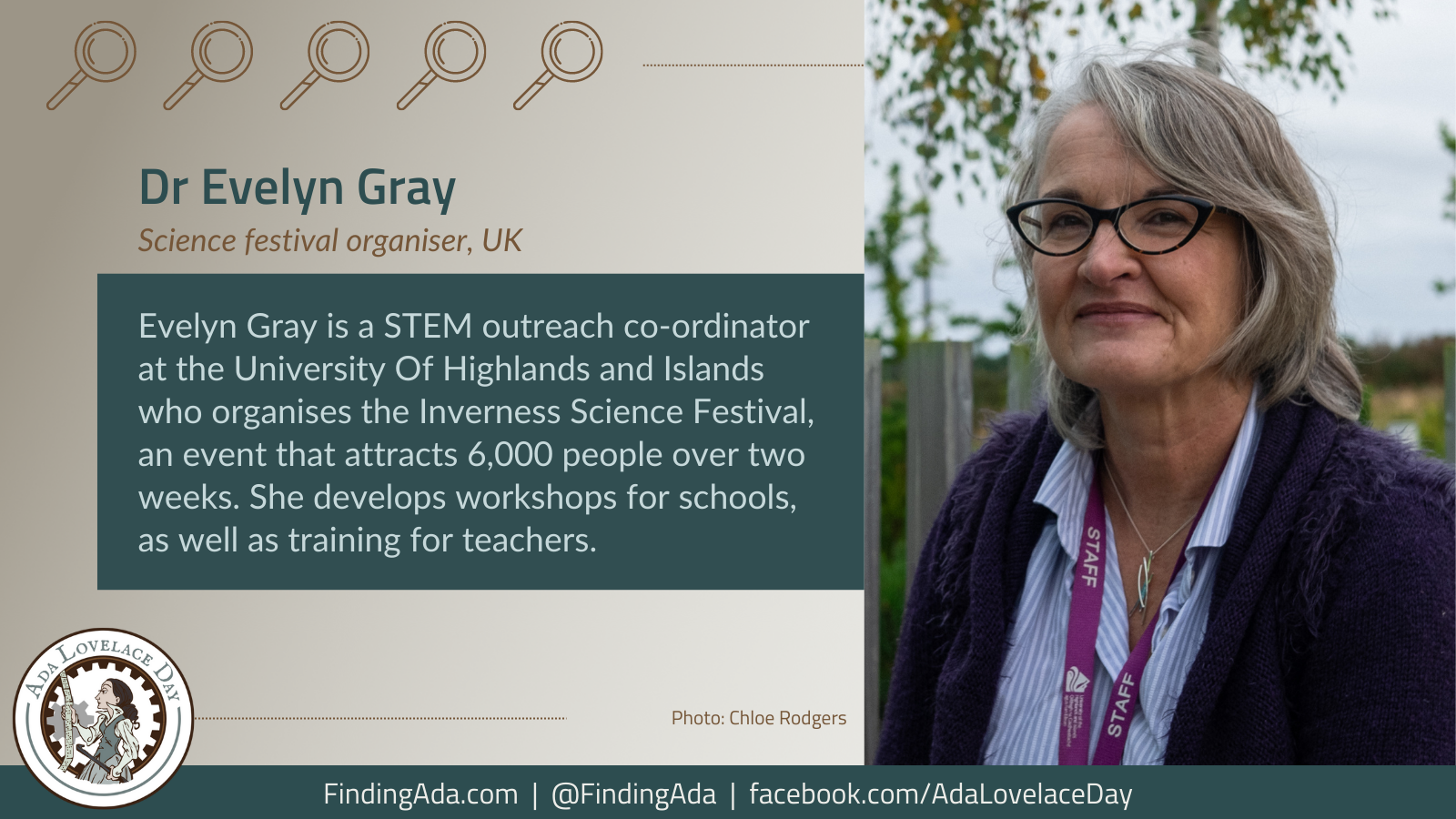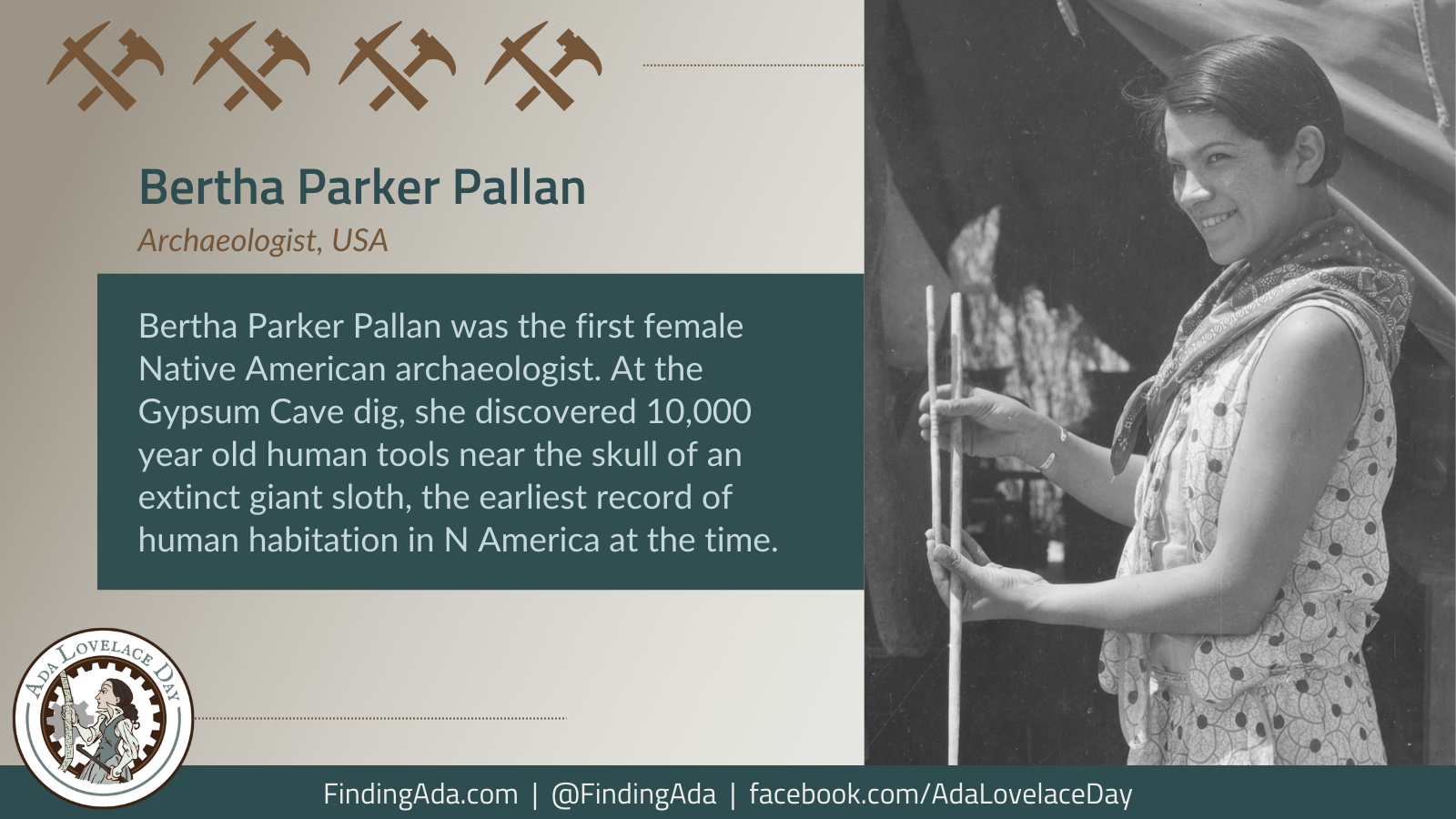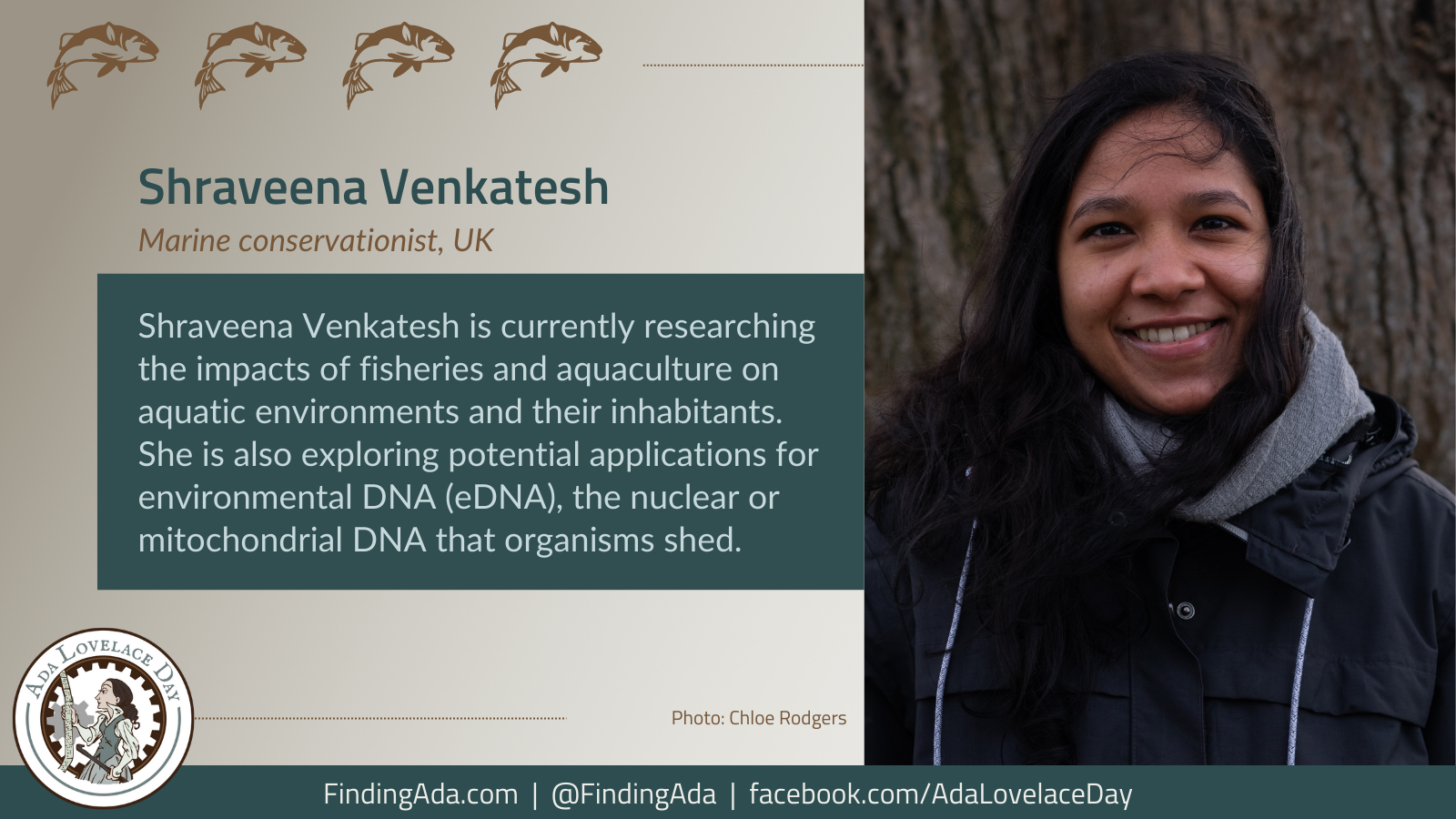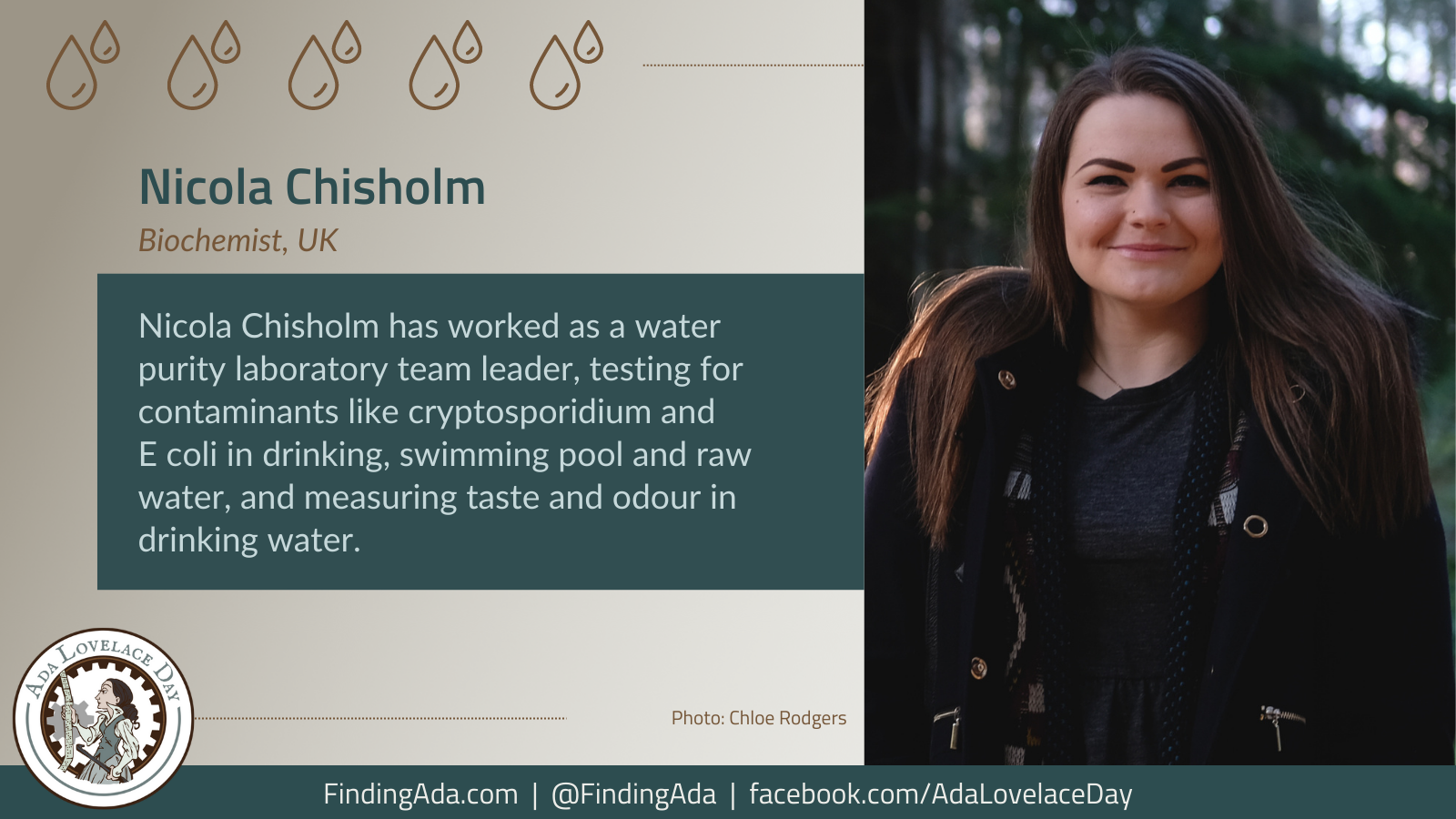
This post was contributed by Chloe Rodgers and is an extract from her Highland Women in STEM project.
Nicola Chisholm
Nicola Chisholm began her scientific career as a sample administrator at Scottish Water. She then became a Laboratories Team Leader and eventually worked as a scientist there. Her work involved carrying out analytical methods within the cryptosporidium and microbiology departments, determining the qualitative and quantitative taste and odour in raw and potable waters.
She thinks it is important that people realise analytical scientists are required within the water industry, as the majority are unaware of the daily quality control testing to ensure water is safe to drink. Chisholm now works as a scientist at Merck Group.
When asked what could be changed to encourage more girls into STEM, she said:
“Growing up your stereotypical scientist was often a ‘geeky’ man working alone. It’s important that we break this stereotype. It’s necessary that from a young age schools focus on bringing science into the classroom and that society makes a conscious effort to portray female scientists in textbooks, online, on television, wherever! Motivate young girls with female scientists who have accomplished great things so they then gain the curiosity and passion to pursue a career in science. We also need to give girls the knowledge on what’s available work wise in the scientific field and how broad and diverse science can be. There’s industries I continue to learn about that require scientists! So never limit a young girl’s freedom and knowledge and never underestimate them.”
You can follow her work on LinkedIn.
What do you love about your job/course?
I love that my job is a service to public health. When I tell people about my work they are often amazed as they never realised analytical scientists are required and exist in the water industry. Most people don’t know about the essential quality control testing that is ongoing every day to enable safe drinking water. It’s a rewarding feeling knowing you’re doing something to support society.
What do you think could be changed to better encourage more girls into your line of work/a STEM career?
Growing up your stereotypical scientist was often a ‘geeky’ man working alone. It’s important that we break this stereotype. It’s necessary that from a young age schools focus on bringing science into the classroom and that society makes a conscious effort to portray female scientists in textbooks, online, on television, wherever! Motivate young girls with female scientists who have accomplished great things so they then gain the curiosity and passion to pursue a career in science. We also need to give girls the knowledge on what’s available work wise in the scientific field and how broad and diverse science can be. There’s industries I continue to learn about that require scientists! So never limit a young girl’s freedom and knowledge and never underestimate them.
What do you like about the location of your job/course?
Inverness is a fast growing city. New opportunities continue to come here and I hope more scientific industries consider Inverness as the ideal location to base themselves.
Since interviewing, Chisholm has become a senior scientist in a lab in Glasgow.
